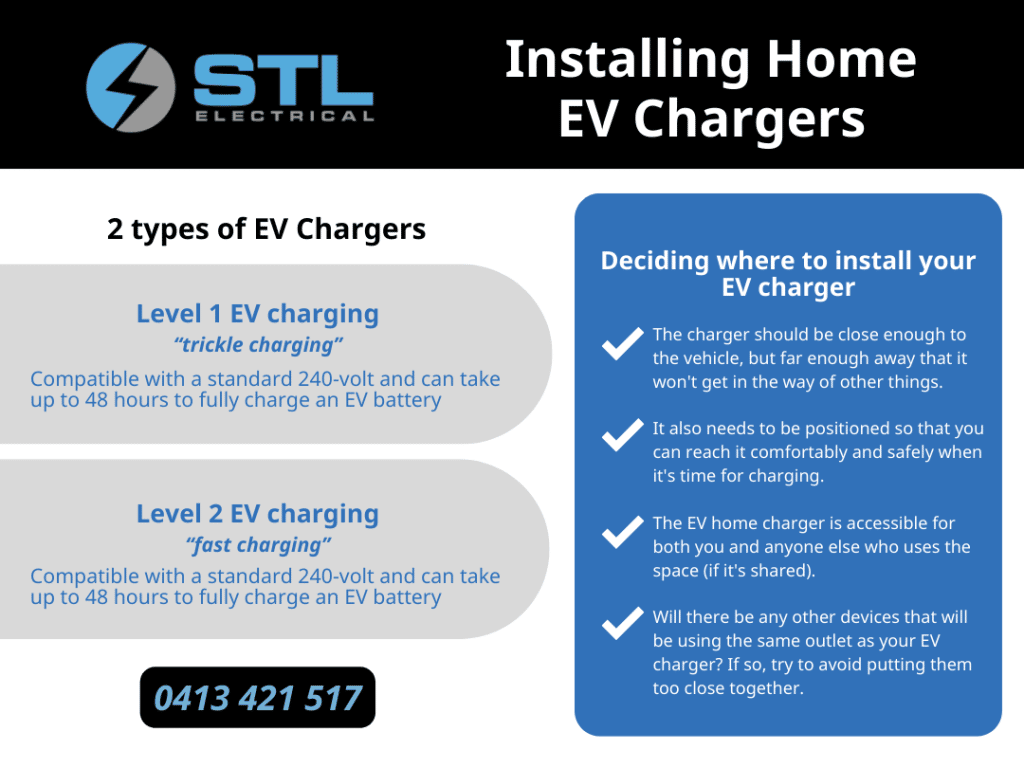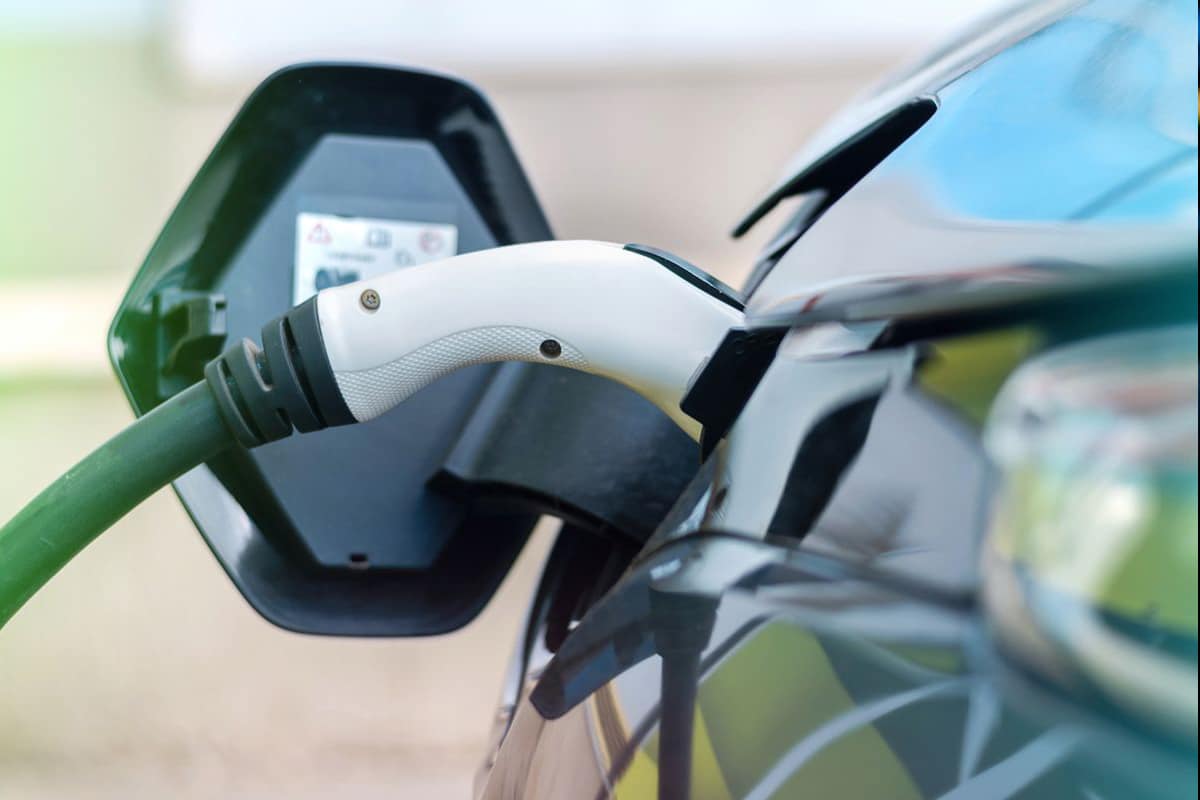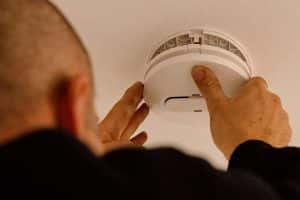Installing an EV Charger for your Electric Car at Home
If you own an electric car, you’ve probably asked yourself the question: “Can I charge my electric car at home?”. The answer is yes.
What are EV chargers, and how do they work?
EV chargers are essentially special versions of regular household chargers that are designed to work with your electric car, using either a regular wall socket or a fast charger. They are also known as Level 1 and Level 2 charging stations.
EV chargers comprise three main components: a power cable, a charger head, and a charging plug. The power cable connects to your electric car’s charging port, usually found on the front or back bumper. The charger head is where you plug in the power cable and then connect it to an outlet. The charging plug goes into your wall socket to draw power from your house’s electricity supply (or solar panels).

EV charging at home with a Level 1 station
Charging your car at home is as easy as charging your phone or laptop. When you buy an EV, it’ll come with a cable that’s compatible with a standard 240-volt outlet. This is Level 1 EV charging or “trickle charging.” It’s slow, but it gets the job done. Typically it can take up to 48 hours to fully charge your EV’s battery. So remember that if you charge your car with a Level 1 charger, it will take longer than a Level 2 charger that has more power options. (Read on to learn about Level 2 charging.)
Level 1 charging is great for those who want to charge overnight, and don’t mind waiting for longer battery life. The kW produced by this home charging station determines the number of kilometres you’ll get from every 10 minutes of charging. So if there’s 5kW available at the socket, you’ll get around 5km worth of range after 10 minutes of charging.
Faster EV charging with a Level 2 station
Level 2 fast charging fills up your battery in as little as 30 minutes, using an EVSE (Electric Vehicle Service Equipment) unit installed by your utility company. Level 2 chargers can add up to 80 miles of range in about 30 minutes, so you can get back on the road quicker.
Considered the most popular, Level 2 EV chargers are available in most locations—such as public spaces and offices. Since they only need 4-10 hours to fully charge an EV, they’re a great option for quick charging while you’re at work or having a restaurant dinner.
Things to consider before buying an EV charger
If you’re thinking about installing an EV charger for your home, there are a few things to consider.
What kind of car do you have? If you have an EV (that’s not Tesla), you can plug into any standard 110-volt or 240-volt outlet without worrying about overloading the circuit or frying your car’s electronics.
How much money do you have to spend? The cost of an EV charging station can vary widely depending on the technology you want and how much power it provides.
What’s your power usage like? If your house is already maxed out on electricity, installing a home EV charger could cause problems with the grid or leave your neighbours in the dark (literally).
What size is your driveway? Most electric vehicles require at least a 10-foot-long driveway to accommodate the car’s length when charging. If your house has a particularly small driveway, installing an EV charger might not be possible without some creative engineering solutions of your own, or hiring someone who knows how to build stuff.
How many people will be using this charger at once? If only one person needs to charge their car at a time, only one plug will be necessary. You’ll need more for your family or a group of people.
Deciding where to install your EV charger
The most important thing is that the charger be close enough to your vehicle to be effective. It also needs to be far enough away that it won’t obstruct other things in your garage—like, say, your car. It needs to be positioned so that you can reach it comfortably and safely when it’s time for charging.
You’ll also want to think about if you’ll have your car plugged in all the time. If so, make sure your EV home charger is accessible to you and anyone else who sharing the space.
Next, consider whether or not there are other devices that will use the same outlet as your EV charger. If so, try to avoid putting them too close together so that they don’t affect each other’s operation. This is can interfere with your car’s charging.
Home EV charger installation
EV car chargers are great, but they can be a little tricky to install. If you want to charge your EV efficiently, safely, and without any issues, you’re going to need help from a licenced electrician.
An EV charger installation is far more complex than installing a regular wall charger. For one, it requires an electrical inspection by a licenced professional. There’s also the extra wiring needed for the EV charger itself. So even if you think you know what you’re doing, it’s best to leave it to a professional.
Hire STL Electrical to have licenced and experienced electricians install your home EV charger at home. Trusted by many across Melbourne, you can be assured that our electricians have the necessary know-how for safe installations. Book a call for more.




